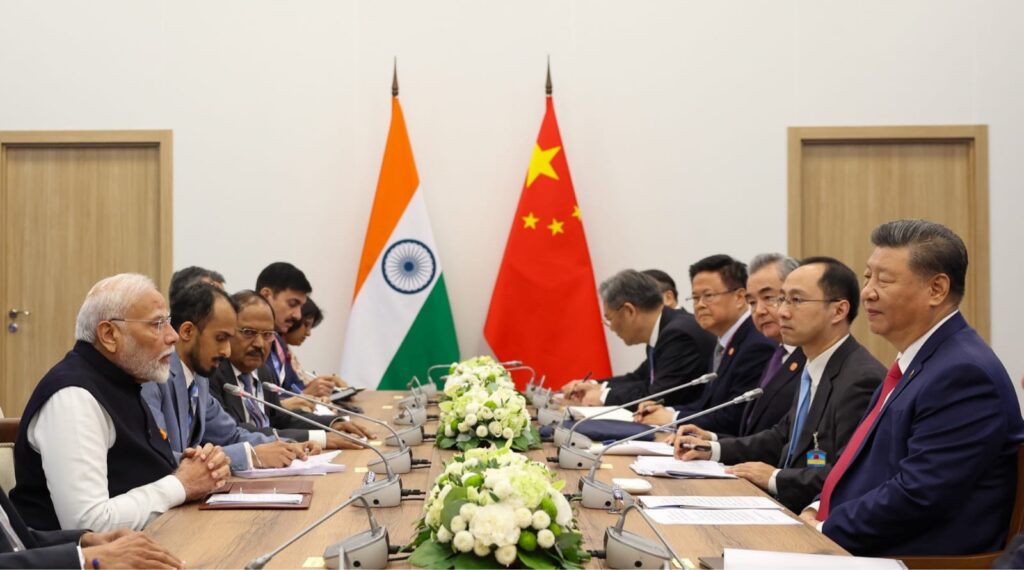Disengagement over Ladakh’s Depsang and Demchok is a great diplomatic step for India and China . A dispute over territory that has been there for decades has provided periodic moments of tension between the neighbors because both are nuclear-armed nations. After a series of high-level military and diplomatic talks, both nations have agreed to scale back troops in the region. This may lead to stabilization in the border dynamics.
Background of India-China Border Disputes

This conflict emerged with the 1962 Sino-Indian War, which was built along the different perceptions of the border line. Here, the LAC largely remains undefined, and there are troops on each side that stay according to one’s own understanding. However, this vagueness has led to skirmishes and confrontations many a time in the years to come, most recently that of the 2017 Doklam standoff and fatally the 2020 Galwan Valley clash.
Depsang and Demchok are important strategic places. Depsang Plains lie beside the strategically very important Daulat Beg Oldi airstrip, which is India’s northernmost airbase. In contrast, Demchok, situated close to the disputed border, has faced many incursions as the place lies close to sensitive locations. These are of strategic importance for military reasons, but they carry an immense psychological weight in the struggle for power of the whole region.
Table of Contents
Attempts and Recent Trends at Disengagement
The attempt at disengagement is part of a military de-escalation process that started early in 2021, following the clash in Galwan Valley. That both countries wish to avoid further clashes is reflected well in the disengagement in Depsang and Demchok, which is part of a broader trend of diplomacy and conflict management between the two nations.
There are reports of cross-border exchange of Diwali sweets at symbolic levels between Indian and Chinese soldiers at various places in an attempt to reduce hostility. In this respect, such maneuvers do take on a joint desire for at least the appearance of peacefulness and stability between the two armies, at least very short-term.
The Strategic and Diplomatic Implications
1. Regional dynamics stabilise
The stabilization of the LAC is important not only for India and China but also holds the key to broader regional security. The stalemate had stretched the Indian security forces to the limit and strained resources as military deployments in high-altitude areas are costly and logistically challenging. Similarly, China is keen to divert its resources and focus on issues in other regions, including the South China Sea and domestic economic concerns.
2. Economic factors
This indirectly may have economic connotations. Good relations with low tension at the LAC may present fertile ground in the future in terms of trade and bilateral negotiations. Bilateral trade between India and China remains healthy despite periodic tension across their borders, comfort may mean candid economic talks are soon available.
3. Communication to the Global Audience
This message is conveyed to the world at large that India and China are ready to handle the LAC issue amicably. Both happen to be global powers, and their behavior regarding borders may impact the entire region of Asia. It’s a matter of concern for both parties to be responsible as the international community has increased attention to peace in Asia.
4. Home Political Effects
However, disengagement may have a positive impact for both nations on the domestic audience. In India, the reduction of tensions with China without seeming to back down may be seen as a victory by the government. For the government in China, which faces economic issues, appearing to value stability over aggression may help its domestic audience.
What the LAC Holds for the Future
De-escalation at Depsang and Demchok is certainly a right move, but resolution of the India-China border issue surely requires long-term commitment. Neither of them has shown a willingness to forego their territorial claims, which means while disengagement may stop immediate hostilities, the underlying tensions stay there.
Military analysts have also pointed out that though temporary de-escalation is possible, it is only through a mutual agreement that an acceptable demarcation of the LAC can ensure peace. This requires too heavy a political dialogue than can be covered by negotiations between the military. In fact, a formalised buffer zone or a no-patrol agreement in a few sectors can prevent these standoffs from recurring further.
Conclusion: The Need for Continuing Diplomacy
The latest to disengage between India and China goes beyond the withdrawing troops; it showed diplomacy can prevail, even where matter issues of the most complex geopolitics disputes. The two nations have finally realized a danger that continued military standoff poses not just to their national security but also stability of the wider region.
This act of exchanging sweets on Diwali may seem very minor, but it shows the common cultural respect on which India-China relations can be based despite their differences. In the future, regular dialogue, people-to-people interactions, and cultural exchanges can play a critical role in fostering better understanding and reducing the potential for conflict.
Both nations will move forward while trying to balance the competitive interest with cooperative engagement. Sustained peace and diplomacy will be a commitment towards stability for the LAC and beyond, but for the two nations’ benefit, and as an example in Asia for how conflicts should be resolved.
VISIT HOME PAGE


